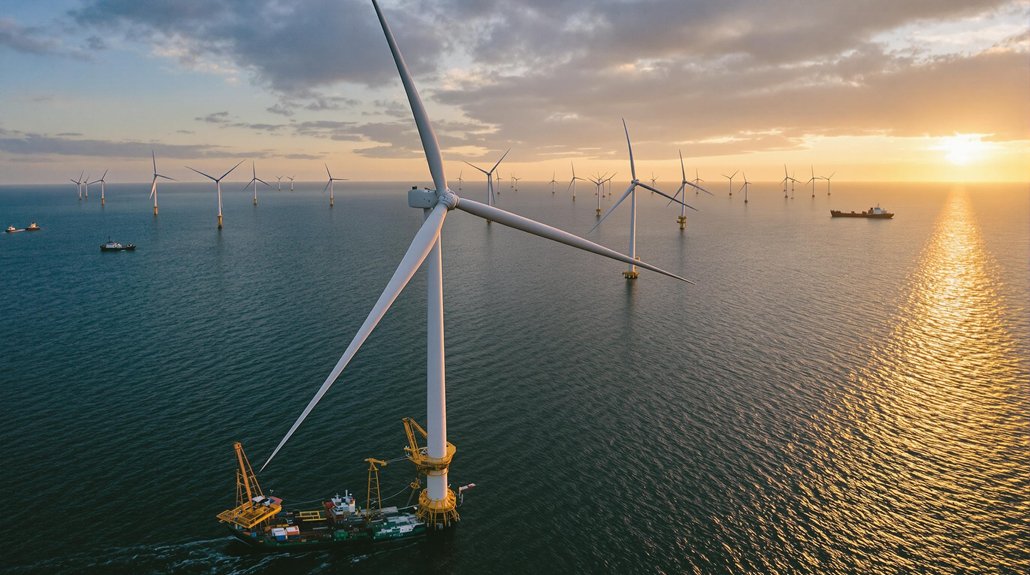Despite having no state-level renewable energy requirements, Florida has emerged as a solar powerhouse in the United States. The Sunshine State reached 18.6 gigawatts of solar capacity in 2025, showing a remarkable 92% growth over 2024 installation levels. This dramatic expansion has pushed Florida to the number one position for newly installed utility-scale solar capacity, surpassing California for the first time.
Utility-scale projects are driving Florida’s solar boom, accounting for 70% of all new capacity. In 2024 alone, the state added 3 gigawatts of large-scale solar installations. Florida Power & Light has been a major contributor, adding 2.7 GWdc in Q1 2025 alone. While Florida still ranks third nationally in total solar capacity, it’s quickly gaining ground on the leaders.
Florida’s solar surge is fueled by utility-scale projects, with 3 gigawatts added in 2024 alone as the state climbs toward national leadership.
The state’s market-driven approach has proven successful, with streamlined permitting and reduced regulatory obstacles attracting major investments. Solar plants under 75 megawatts are exempt from review and permitting requirements, facilitating faster construction across the state. Florida’s solar industry has secured $28.2 billion in investments to date, creating a robust economic sector that employs over 14,000 people across 447 solar businesses.
Florida’s abundant sunshine and available land provide natural advantages for solar development. This growth aligns with the global trend where solar power is the fastest-growing renewable energy source worldwide. The state now generates between 8% and 9.2% of its electricity from solar power, enough to serve an estimated 2.36 million homes statewide.
Corporate demand plays a key role in this growth, with tech companies seeking clean energy solutions. Utility companies have embraced solar development, filing for solar-only rate adjustments to expand their renewable portfolios.
Florida ranks second nationally in residential solar installations from 2019-2024, trailing only California. This growth continues despite the absence of a renewable portfolio standard and restrictions on certain power purchase agreement structures.
Industry advocates like the Solar Energy Industries Association continue working to increase competition and expand solar-plus-storage solutions. While recent state legislation has removed climate change language from policies, solar growth remains unhindered.
Florida’s solar success demonstrates how market forces, corporate demand, and smart investment can drive renewable energy adoption, even without mandates. The state’s competitive position shows that sunshine isn’t just for tourism—it’s becoming a powerful economic engine.
References
- https://www.ainvest.com/news/rise-florida-solar-energy-sector-implications-renewable-energy-investment-2508/
- https://www.canarymedia.com/articles/solar/florida-is-now-a-solar-superpower-heres-how-it-happened
- https://seia.org/state-solar-policy/florida-solar/
- https://seia.org/research-resources/solar-market-insight-report-q2-2025/
- https://www.eia.gov/state/analysis.php?sid=FL








